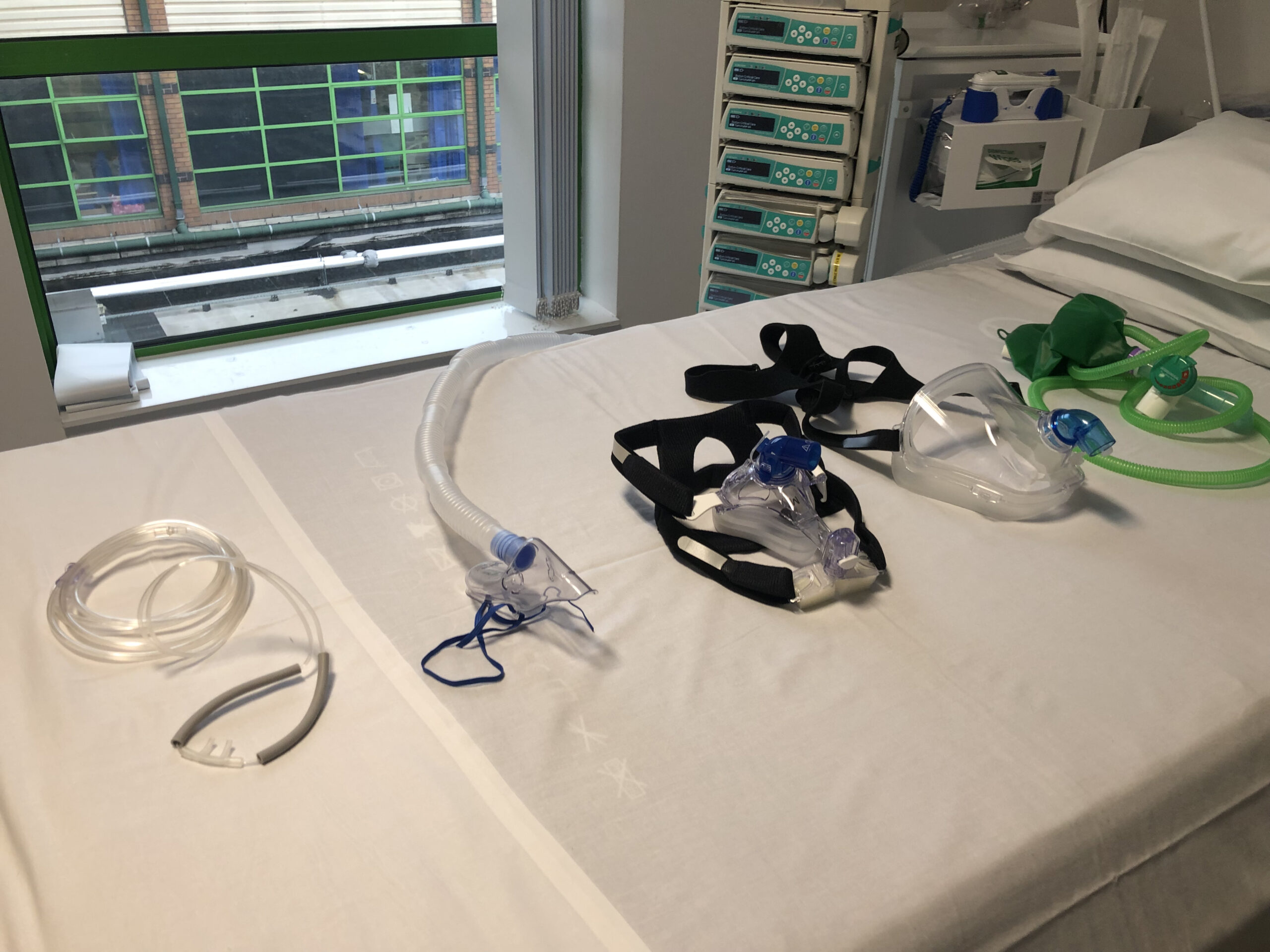Ventilation
Ventilation
A common reason for a patient needing to come to critical care is respiratory failure, which is when the lungs are not able to take in enough oxygen for the body’s needs. Causes of respiratory failure include infections like pneumonia (“a chest infection”), COVID-19, and flares of chronic lung conditions like COPD.
Often, oxygen therapy given on a ward through nasal speculae or a mask is enough, but if a patient needs more support, different devices can be used in a critical care setting.
It is important to remember that all the breathing support therapies discussed are not specific treatments, but merely aim to give time for other therapies like antibiotics, steroids and the body’s own responses to work.
Non-invasive ventilation, or NIV, is a type of breathing support where a tight-fitting face mask is worn and connected to an oxygen supply. The tight fit means that extra pressure can be applied, which helps keep the lungs inflated, and reduces the work of breathing.
The medical and nursing team monitor patients receiving NIV closely, using clinical assessment, monitoring and arterial blood tests. These allow the team to assess whether the treatment is working, and guide adjustment of various settings.
One of the common problems with NIV is that some patients find it uncomfortable. The nursing staff are very skilled and experienced in adjusting the masks to provide the most effective seal and have a range of slightly different devices if a patient is struggling with getting comfortable.”
Some patients get better quite quickly, and can be ‘stepped down’ from this treatment after a short period, whilst others may require it for longer.
Some patients do not get better, and then a decision must be made about whether more invasive therapies are appropriate or likely to be beneficial.
When a patient is described as being “on a ventilator”, we are talking about a type of breathing support where the patient receives oxygen via a machine, attached to a special tube, which passes through their mouth, down their windpipe, into their lungs. To allow this, the patient is kept sedated with anaesthetic medicines. You may have heard the media use the term ‘induced coma’ – please see the associated video for a more detailed explanation regarding this.
Ventilation is one of the key therapies that can be offered on critical care, but despite our expertise and experience in this area, there are risks associated with it, including pneumonia, or a ‘chest infection’. On balance, the benefits of interventions like ventilation should outweigh the potential risks.
In addition to respiratory failure, there are some other reasons a patient may need to go onto a ventilator. Some of these include airway protection, if the patient’s conscious level is reduced significantly, or perhaps in order to protect an injured brain.
A ventilator is sometimes required for only a day or so, sometimes for a few days, or in some cases, several weeks, as can be the case with diseases such as COVID-19. The duration of ventilation depends on lots of factors which are closely monitored by the critical care team. It is important to remember that a ventilator is a type of organ support rather than a specific treatment, and it simply gives the patient’s body time to respond to other treatments.
If a patient responds well to treatment after a few days, they can usually be woken up to breathe unaided, or ‘stepped down’ to one of the mask devices discussed previously. If however, it takes longer for their condition to improve, the patient’s breathing muscles and protective coughing reflexes may have become too weak, and a tracheostomy may be performed in order to help ease them off the ventilator – please see the associated video for a more detailed explanation regarding this.
